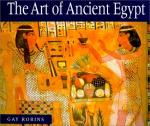|
This section contains 1,053 words (approx. 4 pages at 300 words per page) |

|
A Fine Line. The boundary between politics and religion is hard to draw in ancient Egypt. The vocabulary used to describe the king illustrates the interconnectedness of these two categories in Egypt. Five different Egyptian words were used to refer to the king. These words cannot be translated clearly because the English language has no vocabulary to describe a man who becomes semidivine when taking a political office. Translations sometimes also blur the distinctions among the king's roles. The following words (with their common translations) were used to describe the king:
- Nisut: A religious concept used to describe the king as the representative of justice and legal order (maat).
- Nisut-biti: "King of Upper and Lower Egypt"; this term described the king as the embodiment of power on earth.
- Hemef ("His Majesty") or Hemei ("My Majesty") described the human ruler who sees...
|
This section contains 1,053 words (approx. 4 pages at 300 words per page) |

|




